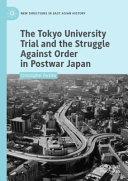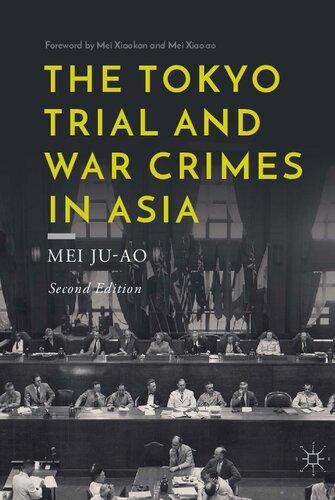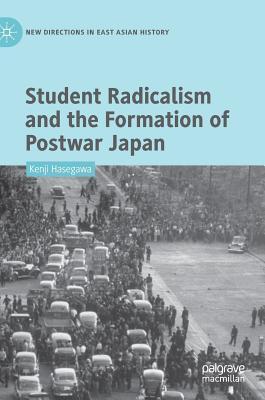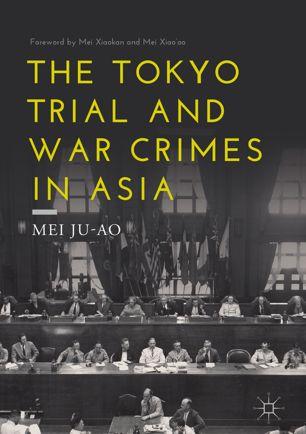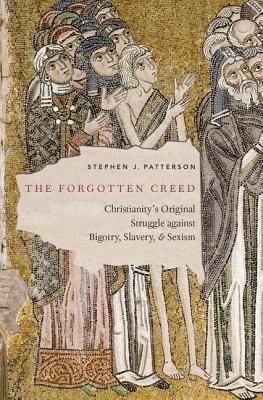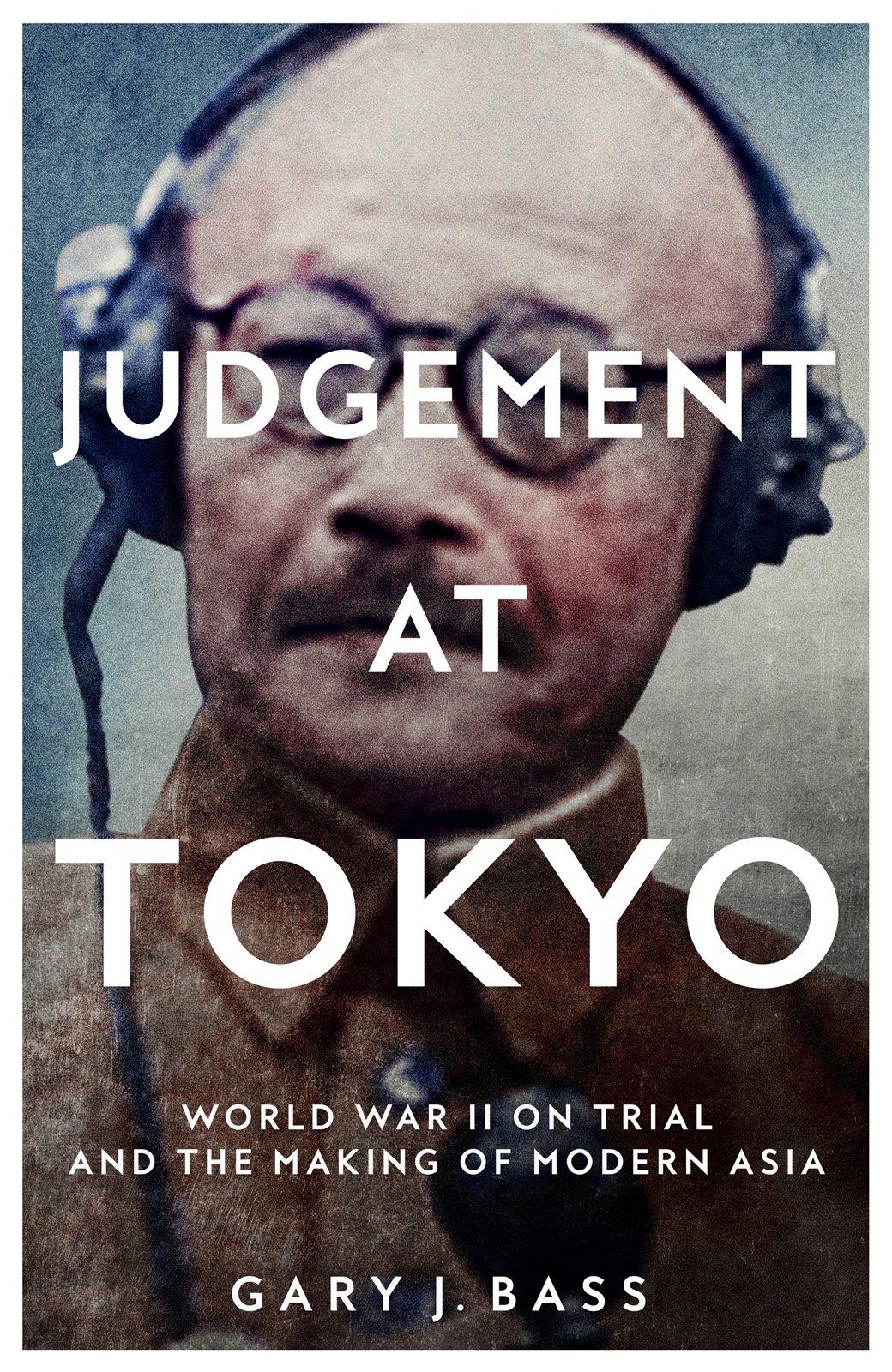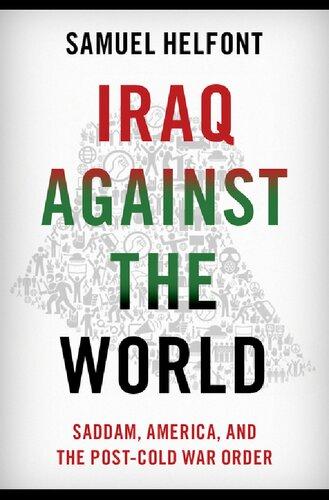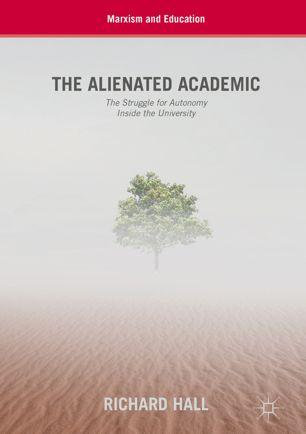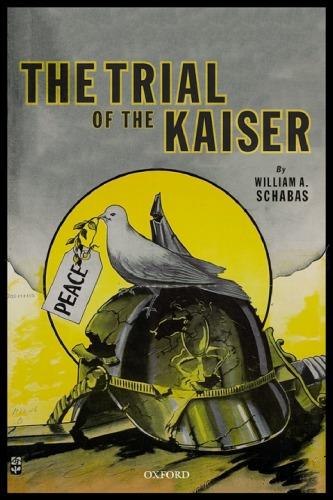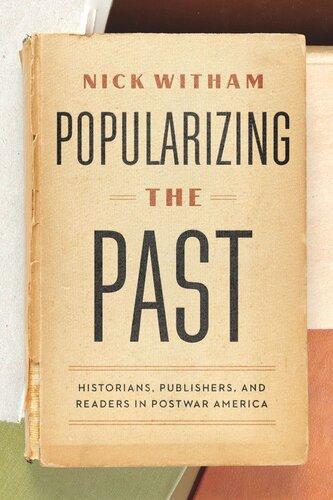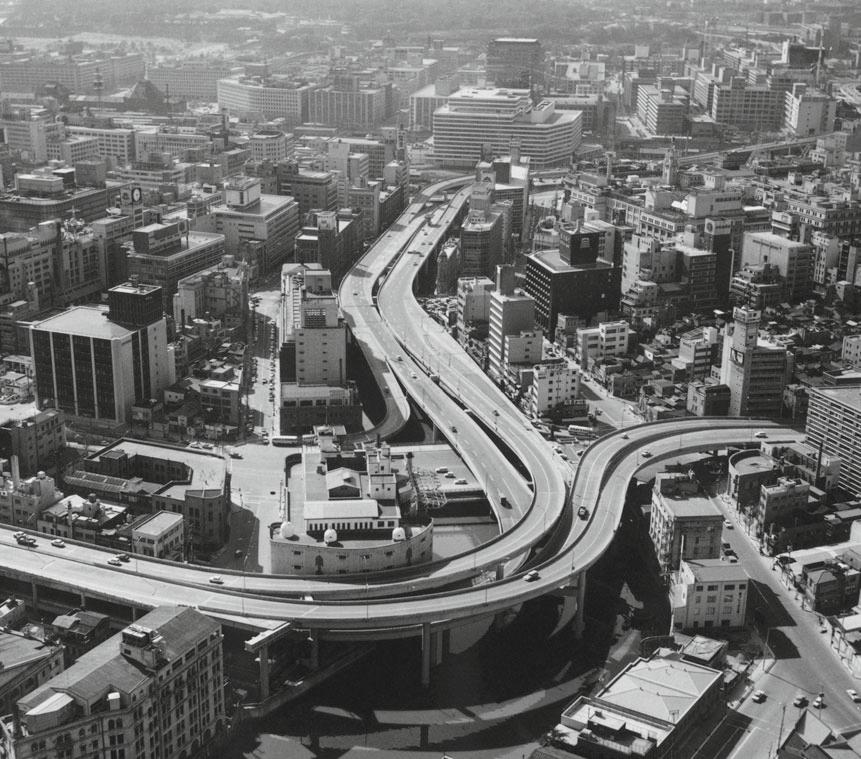Introduction: Disorder in the Courts
On a hot and humid day in July 1969 journalists and spectators took their places in court to watch the next episode in the tumultuous Tokyo University trials. Six months had passed since the events had taken place for which the defendants were accused. Between the 18th and 19th of January 1969, in the deep chill of winter, after a battle between hundreds of students and thousands of riot police at Tokyo University, around 600 student activists had been arrested. Those students found themselves separated and distributed across prisons in the Tokyo area. Students were, in the most part, charged with the crimes of failing to disperse when ordered to by the police, obstructing police business, and assembling with weapons (stones, pipes, concrete, and Molotov cocktails) with the intent to do harm. Of this number, around a third, who became known as the ‘Repentant Group’ (hanseigumi ), opted to be tried separately (bunkatsu k¯ohan ). Their cases were resolved quickly, with the students mostly receiving suspended sentences. The remaining students, however, held out for a unified trial (t¯oitsu k¯ohan ).
On this day in July, it was the turn of ‘Yasuda Group 18’, named after Tokyo University’s famous Yasuda Auditorium in which they had been arrested, to have their day in court. The room was swollen to capacity; two prosecutors sat at their table waiting for proceedings to begin. The defendants and their lawyers, however, were nowhere to be seen. At just
© The Author(s), under exclusive license to Springer Nature Singapore Pte Ltd. 2023
C. Perkins, The Tokyo University Trial and the Struggle Against Order in Postwar Japan, New Directions in East Asian History, https://doi.org/10.1007/978-981-99-7043-8_1 1
past 10am, with the defendants still absent, the presiding judge declared the start of the trial. Amid calls from the gallery for the judge to justify opening proceedings in absence of the defendants, the judge called for a report on the situation in the detention centres. ‘Defendant I’ reported the courtroom attendant ‘stripped himself naked, soaked his clothes in water, and clung onto the base of the sink in his cell. Stubbornly refusing to appear in court he yelled: “I demand a unified trial! I have submitted my reasoning to the courts in writing!”‘ The attendant repeated the same report for the other defendants.
A call from the gallery: ‘Their reasons for not appearing in court are legitimate, aren’t they?’ The judge: ‘the spectator who just said that, stand!’
Three guards rushed to where the offending spectator sat and tried to jostle him to his feet. ‘He won’t stand…’ they reported back to the judge.
‘Eject him from the courtroom’ ordered the judge. As the guards did so the courtroom erupted into noise, calls of ‘down with absentee trials’ echoed around the walls. Five more spectators were taken bodily from the courtroom.
Next, defendants who were on bail were admitted to the courtroom. Emblazoned on their shirts in marker pen were the slogans ‘do not allow trials in absentia!’ and ‘repeal legal fascism!’ One student tore of his shirt to reveal the same slogans written all across his body.
Their lawyers were now also present but had no intention of complying with the trial. ‘We have come here to demand a single unified trial,’ they responded when addressed by the judge. ‘We do not intend on engaging in legal activities in this group trial courtroom.’
The prosecutors began to present their case, starting with the argument that under Article 286 section 2 of the Code of Criminal Procedure, should defendants fail to appear in court without a legitimate reason to do so it was legally possible to hold trials without the defendants present. At this the courtroom erupted once more and the presiding judge called a recess to confer with his two colleagues who were seated to either side. Returning to the courtroom the judge stated they agreed with the prosecution: Article 286 section 2 would be applied, and the trial would continue. The lawyers rushed towards the bench, demanding an explanation. The spectators shouted their disapproval.
At 10:55 the presiding judge called in the riot police, who had been stationed close by and who quickly bundled away two thirds of the spectators. Only twenty people, mostly families of the accused, were left in
the gallery. ‘As they have hampered the management of this courtroom, I order the removal of the defendants from the courtroom’.
‘Now we have peace,’ the judge remarked as he asked the prosecutor to continue, drawing wry smiles from journalists. Indeed, the room was now so silent the that journalists could easily hear the thrum of the air conditioner as it fought against the heat of the Japanese summer. And with the proper atmosphere secured, the prosecution began to make their case.
This brief account of one episode of the Tokyo University trial, drawn from a longer piece that appeared in 1969 in the magazine Sh¯ukan Asahi, raises a number of questions that are central to this book.1 What led to such a huge indictment of students? What spurred the acrimony between the courts and students? Why were the students’ lawyers so adamant they would not comply with the trial process? What was the outcome of holding trials with the defendants and their lawyers absent? And what provoked the wry smiles from the journalists when the judge had finally secured peace in the courtroom? In seeking to answer these and other questions, this book offers an account of the Tokyo University trial, the processes that shaped it and the impact the battle in the courtroom had on the protagonists and their communities. The story of the trial that emerges in one about the management of order (in Japanese chitsujo ) in postwar Japan—social, legal, and emotional—efforts to naturalise that order in Japanese institutions, and the work of New Left students, their lawyers, and their allies to breach that order through their radical praxis. But it is also about the cost of that battle and the impact it had in ultimately shoring up the very order it tried to challenge.
This book contributes to the growing literature on New Left student activism in Japan in the late 1960s. Since the publication of Oguma Eiji’s historical overview of Japan’s 1968 there has been a steady stream of scholarly investigations of Japan’s New Left movement to which the following discussions in this book is indebted.2 But when the Tokyo University trial is mentioned in the historiography on this period it is usually as a side note to the transition of the student movement away from the campus struggles of 1968/69 and towards the domestic and international action of New Left political factions in the early to mid1970s. Furthermore, other than some early discussions in Japan, the trial is almost absent from scholarship on Japan’s legal system.3 The exception to this rule is the work of Patricia Steinhoff, who has discussed the Tokyo University trial in the context of New Left activism in the late
1960s and 1970s and the development of the Ky¯uen renraku sent¯ a (Relief Contact Centre, Ky¯uen), a clearing house which coordinated relief efforts for students on trial during this period of mass arrest. As Steinhoff has argued, through its publications and the leg work of its volunteers, which at the organisation’s peak numbered in the tens of thousands, Ky¯uen played a crucial role in coordinating activist resistance to police interrogation, worked hard to block the authorities from co-opting students’ families into their efforts to break down student resistance, and were instrumental in supporting defendants and devising courtroom strategies to tie up state resources. Support organisations also played an important role in connecting the student movement to the wider Japanese public through their information campaigns and fundraising efforts.4 Steinhoff’s work has been invaluable in documenting the range of the work done by support groups during the late 1960s and into the 1970s and has helped with understanding the challenges they faced and the emotional toll that work took.5 The approach taken in this book, however, differs from that taken by Steinhoff in two main respects.
First, rather than placing the Tokyo University trial within the many trials that followed the mass arrests of New Left activists that took place between 1968 and 1972, this book focusses on the Tokyo University trial itself, and in particular on events leading up to the first verdict in late 1969. In doing so this book does not intend to downplay nor intentionally ignore other university struggles, which were wide, geographically dispersed, and various. Neither does it wish to suggest that by virtue of being centred on Tokyo University—the most elite of elite Japanese universities—this trial has some sort of exalted status and as such is representative of the whole. With these caveats in place, however, it is the case that the Tokyo University trial deserves attention because it was the first truly mass arrest, indictment and detention of students in the period.6 As such, and perhaps unsurprisingly, when examining the materials produced by the students, their support groups and their lawyers, the letters of students in detention awaiting trial, as well as the documents produced by the prosecution and the courts, it became clear that in early 1969 questions of intention, process, and tactics on all sides in response to this new form of mass trial had yet to be worked out. Examining the trial on its own terms allows for analysis to examine the social, political, and legal forces entangled in the decisions taken by the students (who themselves were far from a homogenous body), their lawyers and the courts in a situation that was new to all involved. With legal doctrine clashing with
the theory and practice of students and their legal representation there were no clear answers about how to proceed, and legitimacy of the whole trial process could not be taken for granted. It is therefore important to understand the processes through which the trial came to take the form that it did, and how that form contested and legitimised.
Second, and related, this book argues for the Tokyo University trial in particular being an important moment in the complex and again contested development of the Japanese state’s postwar approach to the management of domestic order. The collapse of the Japanese Empire, and the institutional reconfiguration of Japan under the Allied Occupation, presented Japan’s conservative elite with the challenge of managing domestic order without the institutional and legislative techniques, and the ideological justifications for those techniques, that had been used so successfully to crack down on dissent before the war. As Ogino Fujio has argued, however, within the context of Cold War fears of international communism the Japanese state was remarkably successful in rebuilding its security apparatus in the name of securing order as a prerequisite for the new democracy.7 The late 1940s and 1950s saw a war of attrition waged on left-wing social movements as successive laws were passed in the name of securing order to close down spaces in which counter hegemonic practices—namely left-wing politics—could occur. As the state cracked down on left-wing political mobilisation, however, those battles moved into the courts where the judiciary demonstrated their newfound independence in rulings that hampered the state’s efforts to gain hegemony over the articulation of the sociolegal order. In response to these riotous courtroom battles—the 1952 May Day trial chief among them—the state introduced new legislation for maintaining order in the courts, and the Supreme Court advocated strongly for that legislation’s use. Importantly, this legislation was designed to secure a certain form of atmosphere in courtrooms—one of peace and solemnity—the maintenance of which was articulated with the legitimacy and authority of the law.
The mass national protests—spearheaded by student radicals—over the renewal of the Japan-US Security Treaty (known in Japan as Anpo) between late 1959 and 1960 brought about a sense in Japan that its fledgling democracy was on the brink of collapse. Afterwards, the ruling Liberal Democratic Party (LDP) moved into the 1960s with a focus on economic growth, as well as securing social order through the careful inculcation within the populace of a ‘proper’ understanding of the importance of respect for the forces of law and order in securing the ‘bright
society’ of the future. While Japan performed its economic miracle, however, contradictions within this new society—chief among them that the same order that secured prosperity also meant alignment with the US in the increasingly bloody war in Vietnam—prompted a resurgence of student unrest. As student action became more unified and organised, Japan’s security apparatus began to see them as a significant threat to their view of order and called for increasingly more proactive and punitive approaches to policing. The Shinjuku Riots Incident of 1968, in which the students’ sense of outrage threatened to spread to bystanders, solidified in the minds of state security agencies, police, and prosecutors, that student radicalism presented a significant threat to public order which threat would likely escalate to untold levels in 1970 with the renewal of the Anpo.
Thus, by the time the occupation of Tokyo University came to a head in January 1969, the state was set to make an example. Indeed, the rhetoric from conservative politicians and prosecutors was of the future of Japan at stake. At the height of student unrest across Japan, for example, Japan’s Prosecutor General Imoto Daikichi made the following assessment of Japan’s development since the end of the Second Word War (WWII), in which he spoke of the moral imperative to secure order:
Japan’s recent economic growth has been remarkable, ranking second in the free world’s GNP, just behind the United States. Currently, it can be considered an industrialized nation, but it seems that a post-industrial society is not far off. There are said to be four distinctive industries in such a society: the information industry, symbolized by the development of computers; the marine industry, centred around the continental shelf, which accounts for about 80% of our territory; the materials industry, represented by plastics and others; and industries associated with the growth of megalopolises. While the development of these industries is noteworthy, I believe that such economic growth is based on the maintenance of law and order, which we all work tirelessly to uphold. Without the preservation of law and order, we cannot expect individuals to thrive freely, and it would be easy to see that economic development cannot be achieved.8
In fact, for Imoto Japan had been on the path to such greatness almost a century before, when after the 1868 Meiji Restoration the nation made economic, social, and political gains that took the entire world by surprise. In his analysis, however, this incredible progress had been destroyed by
the unlawful acts of the military who, through insubordination, murder, and ultimately the failed coup d’etat by young military officers of the Imperial Way Faction on 26th February 1936, plunged Japan into chaos and destroyed any vestiges of democracy. The February 26th Incident, Imoto argued, could have been avoided had defence lawyers not drawnout previous cases, and had the courts been allowed to try two of the principal actors—officers Kurihara Yasuhide and Muranaka Takaji— who had been involved in a prior incident but whose prosecution had been suppressed by the military. The military’s inability to secure order, according to Imoto, also led to the murder of General Mori Takeshi at the Imperial Palace in August 1945 in an attempt to prevent Japan from accepting the terms of the Potsdam declaration and as such ending the war. It was in this context that Imoto characterised student unrest:
Since the first Haneda Incident in the fall of 1967 until September 1968, around 2,400 individuals have been charged with assault, injury, and obstruction of public duties in Tokyo, Osaka, Nagasaki, and elsewhere. Among them, more than 600 have been sentenced, while over 1,800 remain unresolved. People seem to think that a trial in the first instance is over with the prosecutor’s indictment, but this is an urgent matter requiring correction. That is to say, more prompt and appropriate trials must be conducted. In today’s Japanese society, student unrest incidents are symbolic. If law and order can be maintained through these incidents, it can be said that law and order have been generally maintained. If this breaks down, Japan’s economy would also collapse, just as the once-powerful Japanese military did.9
Imoto’s analysis of the parallels between Japan’s descent into war and the tumultuous politics of the late 1960s was emblematic of thinking amongst Japan’s conservative elite on the threat of student unrest and the barriers they saw towards its effective policing. In their eyes, like the young officers of the Imperial Way Faction, students were seen as coddled by the legal establishment, who saw something to be admired in their youthful adherence to their ideals. Judges were too lenient. Defence lawyers were apt to employ strategies that held up the course of justice. And like those officers who attempted to block the acceptance of the Potsdam declaration, which paved the way to Japan’s return to democracy, students were through their actions destroying the foundations of Japan’s economic, social, and political progress. In this regard the policing of student unrest in the late 1960s was for Imoto both a new challenge and a ghost come back to
haunt Japan from the darkest days in living memory: a re-emergence of a test for the robustness of Japan’s democracy that it had once before failed. The approach taken in the courts during the Tokyo University trial, however, was not one of simple punishment of students for reckless acts. From the writings of prosecutors and judges it is clear that their aim was rather to make distinctions between those students for whom redemption in the eyes of the national community (for which prosecutors and the judiciary claimed to speak) was possible, and those who could only serve as symbolic of the outcome of transgressing the rules governing the actions appropriate to young people, and students in particular.10 The distinction hinged on compliance with the trial process, and through it expressions of remorse. In this regard the courts were engaged in what legal scholar Richard Weisman calls the ‘moral regulation of social life’.11 For Weisman, an important function of the law is eliciting remorse from the offender regarding the wrongdoings that have been committed and in so doing communicating to the national community the rules of feeling to be associated with certain acts.12 In this sense expressions of remorse are performative acts that demarcate, or when lacking fail to demarcate, a distinction between the self that committed the offence and the new self that now joins the national community in condemning the act committed. If remorse is expressed and accepted, the offender successfully establishes their new remorseful self as their true self. In the eyes of the law, they now have the potential to move on with their lives. But when there is no performance of remorse, or that performance is deemed inauthentic, the crime comes to define who the offender is: it becomes their ‘essence’ and means they can never be successfully reintegrated into the national moral community.13
And the nation was watching. Indeed, the trial took place under extreme media scrutiny across the legal press, intellectual magazines, weeklies, daily newspapers, and even television. During 1969, not a single day passed without the press reporting on the latest developments in the sensational trial. Pages were filled with open discussions, roundtables, and reportage. In this regard, the trial represented what Douglas Kellner refers to as a ‘media spectacle,’ which he defines as those ‘phenomena of media culture that embody society’s fundamental values, initiate individuals into its way of life, and dramatize its controversies, struggles, and modes of conflict resolution.’14 The media coverage, however, did not all go in favour of the prosecutors and the courts. The defence team’s strategy for the students was to actively promote such a spectacle in an attempt to
erode the court’s hegemony over legal process and moral rectitude, and bring the court battle to the masses. As tensions grew, the trial risked undermining the judiciary’s legitimacy as final arbiters of proper conduct, prompting them to leave the sanctity of their courtrooms and violate a core principle of judiciary “never explaining” (saibankan wa benmei sezu ) their positions.15 This approach by the defence, however, was also subject to fierce criticism as a violation of legal ethics and a betrayal of their student clients.
This brings us to another theme of the book: the role of lawyers in Japanese society, their status within the Japanese legal system, and the question of legal ethics. Prior to WWII, under the Meiji inquisitorial legal system, lawyers held a lower status in the legal hierarchy than judges and prosecutors and established their place in society by advocating for social movements in politically charged cases. The postwar Constitution and 1949 Attorney’s Act (Bengoshi-h¯ o ) elevated the status of lawyers, but their role in the judicial process remained a subject of debate. In the new adversarial system ushered in by the Allied occupation after the war, during detention and interrogation defence lawyers were now expected to uphold the rights of the accused as stipulated by the Constitution, and during the trial submit evidence that called into question the prosecutor’s version of events. The new emphasis on human rights and the right to counsel within an adversarial legal system was to expand the scope of and demand for legal representation, and professionalisation secured independence. The current literature on legal defence in Japan, however, agrees that in practice the adversarial model only went so far. As characterised by Murayama Masayuki, defence lawyers have instead tended to act as ‘caretakers’ through the legal process, whose job is to help the client tell the truth and make reparations to secure the most lenient outcome possible.16 Thus, despite being constitutionally required to defend their clients, lawyers are pressured to expedite trials by collaborating with judges and prosecutors. Instances in which lawyers resisted cooperation, such as during the 1952 May Day Trial, were criticized not only by the state but also by their own professional associations as unethical. By the late 1960s, the debate about the appropriate role of lawyers in the legal system had reached a critical point, with loud voices on the right arguing that the judiciary was succumbing to left-wing influences through its relationship with organisations such as the Young Lawyers Association (Seinen h¯oristuka ky¯okai ). Within this context the defence team for the students in the Tokyo University trial, who identified strongly with the
anti-establishment thought of their clients, became increasingly at odds with the legal system itself—the courts, the prosecutors, and progressively their own community of lawyers and legal associations.
As legal anthropologists have shown the legitimacy of trials is bound up with their orderly conduct. ‘For a hearing or trial to function,’ observes Justin Richland ‘the parties must tacitly agree to participate—they have to consent to the game’s rules. There’s significant cooperation involved in this respect.’17 As long as such cooperation persists, the question of the proceedings’ legitimacy remains tacit. When cooperation is no longer assumed, however, the issue of legitimacy shifts from being a latent concern to a prominent feature of the trial. This stage, in the words of Winnifred Sullivan, is when ‘the trial itself begins to be on trial… the legitimacy of the proceedings becomes a persistently present question.’18 Precisely this outcome transpired during the Tokyo University trial. The students and lawyers who constituted the “unified group” refused to comply with the legal process entirely, arguing against the caretaker view of the defence lawyer, and maintaining that as the courts were now functioning as a tool for suppressing the movement they were now illegitimate. The lawyers further argued that the law’s emphasis on individuals and their rights, so central to the reformulation of Japan’s postwar Consitutitonal order after WWII was being weaponsied against communities and value systems that opposed the hegemonic order of the state. They believed that the ability to speak, as guaranteed by the postwar Constitution, was meaningless if the students were forced to express themselves only as individuals before the judge, rather than as part of the community that gave their words and actions meaning. And by refusing to cooperate with the trial process, the students and their lawyers transformed the trial into a debate in the courtroom on the moral legitimacy of the law itself.
A brief look at the previous work of lead lawyer defence lawyer Yamane Jir¯o demonstrates this approach did not come out of the blue. Born in 1935, Yamane was a graduate of Ch¯u¯o university who had already made a name for himself as a provocative advocate willing to take on cases that asked uncomfortable questions about Japan’s postwar status-quo. In 1968, for example, Yamane had been part of a team representing Kim Hiro, a second-generation Japanese Korean who in February of that year shot dead two organized crime members to whom he owed money.19 Kim had then escaped to Senzu in Shizuoka, where he occupied the Fujimiya Inn and took 16 hostages. In the resultant standoff with police, punctuated with sporadic gunfire and blasts of dynamite from the Inn, Kim
demanded police apologise for the attitude they took towards Koreans in Japan. During the siege Kim held press conferences with the mass media, who had flocked to the scene, even going so far as to phone into a television variety show (waido sh¯ o ) to forward his claims that his crimes were a product of systematic prejudice against Koreans in Japan.20 After the 88hour siege, and two televised apologies by the Shizuoka Prefectural Police Chief for use of discriminatory language, Kim was eventually arrested and put on trial for the two murders.21
The Kim Hiro incident (Kimuhiro jiken ), as it became known, has some telling similarities with the Tokyo University trial. In one sense Kim’s case was cut and dry. Kim had killed two loan sharks and had repeatedly confessed to the murders. But much like the events that would play out in 1969, although Kim acknowledged his crime, he refused to attend his trial until he felt the court was ready to discuss the case in the context of Japanese racial prejudice towards Korean residents.22 In effect, Kim and his defence team aimed to use the trial to examine the history of discrimination towards Koreans in postwar Japan; as Yamane’s legal team put it, the case had brought to light the ‘significant problem of race in Japan’ and it was now incumbent on the court to ‘closely examine the causes and meaning of [Kim’s] actions’.23 To do so the defence ushered in sources of authority from different fields of social practice, and like the Tokyo University trial, Kim’s siege and the trial that followed became a media-spectacle that threatened to breach the legal sanctity of the courtroom. The penetration of the media sphere into the legal sphere was part of Kim’s defence: one of the conditions set by Kim for his appearance in court was appointment of Korean Japanese literary figures as ‘special council’ (tokubestu bengonin ).24 And here the Kim Hiro incident presaged another concern found in the Tokyo University trial: namely the status and character of ‘truth’ (shinjitsu ) within the criminal justice system. As noted, the truth of Kim’s actions was not disputed— he did what he did and admitted as much. But for Kim and his legal team this truth was inherently limited as it did not address the potential structural causes for his actions. These structural ‘truths’ had no status within the epistemology and processes of the legal system, which on the defence’s view was interested only in the truth of guilt or innocence with respect to charges against the accused. Ushering in voices from outside the courts pushed at the boundaries of legal epistemology. Those voices were a threat. These questions about which category of truth belongs in the court would become core to the Tokyo University trial as well.
Finally, offers new insight into the experiences of students held in detention while awaiting trial. For the students, continued defiance of the courts meant long detention with minimum contact with others inside and outside prison walls. But moving forward with their lives was predicated on accepting the legitimacy of the trial, the procuracy’s narrative reconstruction of their actions, and that they offer an apology in the courts: an act that resonated painfully with the prewar phenomenon of apostasy known as tenk¯o (lit. turning) which saw progressive and radical political actors recanting their views in the face of repressive state power. To borrow the words of Robert Weisman once again, for the students to take this option would be to:
… acquiesce to a version of their crime that negates its moral content, as well as to shift allegiances from a moral community that views the act as justifiable to a moral community for whom the act cannot be justified. For the unremorseful offender, the price of continued defiance is the risk of continued loss of liberty. The cost of compliance, however, is the repudiation of one’s declared moral allegiances as well as the betrayal of the moral community that supported those allegiances.25
To explore how students dealt with the tensions of life in detention I draw upon a substantial collection of letters from the students that were collated and edited by supporters on the outside and published as the “Prison Letters” (Gokuch¯ u shokansh¯u ). This publication served a dual purpose: facilitating communication between the detainees and the outside world, and promoting conversations among the detainees themselves, who were kept apart from one another. From the letters emerges a picture of a highly regulated life in which the students struggled to maintain the emotions that drove their actions as part of the movement. Trapped in a continual cycle of monotonous routines, they longed for political discourse not only in terms of revolutionary theory but also as a source of excitement and comfort that provided them with a sense of belonging. For many of the students, the experience of detention was a struggle to maintain “our language” (wareware no kotoba ) not just as simple words but as a way of life intertwined with activities, emotions, and methods of relating within their moral community. However, the letters also demonstrate tensions within the detainee community and between the detainees and the movement on the outside, as some detainees on the inside began to question the motivations of the publication committee,
who framed the letters as emotional and linguistic resources for the movement.
The structure of the book largely mirrors the discussion above. The students and their lawyers conceptualised their struggle as one against Japan’s bourgeois order and how that manifested in the legal system. Therefore, to provide necessary context for their view of the trial, Chapter 2 discusses state approaches to the question of order between 1945 and 1960, with a particular focus on the legal legacies produced by approaches to the management of troublesome students and riotous courts. Chapter 3 uses documents from the ruling Liberal Democratic Party (LDP), Japanese Public Safety Intelligence Agency (PSIA) and Cabinet Office reports, and examples from the popular and legal press to place the Tokyo University struggle within the context of rising state alarm over student radicalism in the lead up to the 1970 renewal of the Anpo security treaty. During this time political elites called for harsher punishments for students and exerted pressure on the judiciary to cooperate more closely with prosecutors in the policing of student unrest, while prosecutors struggled to find a balance between meeting the demands of politicians and adopting an effective method of policing that would not escalate the threat of radical student action. Chapter 4 surveys the initial aftermath of the battle for the university, detailing changing prosecutorial and judicial policy towards students and mobilisation by the students’ support groups and lawyers to challenge these new approaches. Chapter 5 is dedicated to the battle between the courts and the students’ lawyers over process. This chapter shows how the question of unified vs small group trials was in fact a distillation of two radically opposed views on the scope and function of the trial: views that framed fundamental questions about rights, responsibility, the collective versus the individual, and ultimately the meaning of truth within the courts.
Chapter 6 details the trials themselves using first person accounts of proceedings, documents produced by the courts and the students’ lawyers, and the wide-ranging media coverage. While the courts attempted to manage order in the courtroom students and their supporters continued to resist the trial process. However, I also show how as the trial progressed, and it became increasingly clear that the judiciary had no qualms about using Article 268 section 2 to try the students in absentia, cracks began to develop between groups of student detainees over the continued efficacy of trial refusal. The result was the permanent splitting of the ‘unified’ student support group in 1970. Chapter 7 uses
a large collection of letters written by students in detention to investigate the conditions in which they were held, and impact those conditions had on the students, their methods of resistance, and how they came to view their movement from prison. As indicated above, I also show how students worried over becoming symbols of the movement—fetishized sources of inspiring language at the expense of securing their freedom. The epilogue traces the outcome of the trial for students, their lawyers, and Japan’s approaches to managing domestic security.
Notes
1. “Rupo t¯odai saiban,” Sh¯ukan Asahi , no. 2637 (August 8, 1969): 16–18.
2. Oguma Eiji, 1968: wakamono-tachi no hanran to sono haikei (Tokyo: Shin’y¯osha, 2009). Some key texts on Japan’s New Left movement and 1968 include: Ando Takemasa, Japan’s New Left Movements: Legacies for Civil Society (Abingdon: Routledge, 2014); Kosugi Ry¯oko, T¯odait¯os¯ o no katari: shakai und¯o no yoji to senryaku (Tokyo: Shin’y¯osha, 2018); Setsu Shigematsu, Scream from the Shadows: The Women’s Liberation Movement in Japan (University of Minnesota Press, 2012); William Marotti, Money, Trains, and Guillotines Art and Revolution in 1960s Japan (Durham and London: Duke University Press, 2013); Gavin Walker, ed., The Red Years: Theory, Politics, Aesthetics in the Japanese’68 (London: Verso, 2020). Earlier, but still valuable accounts are Guy Thomas Yasko, “The Japanese Student Movement 1968–70: The Zenkyoto Uprising” (1997); Donald Frederick Wheeler, “The Japanese Student Movement: Value Politics, Student Politics and the Tokyo University Struggle” (1974); Kurata Kazunari, Shinsayoku und¯o zenshi (Tokyo: Ry¯ud¯o shuppan, 1978); K¯oji Takazawa, Rekishi toshite no shinsayoku (Tokyo: Shinsen-sha, 1996).
3. For example, see Odanaka Toshiki, Gendai shih¯onok¯oz¯otoshis¯ o (Tokyo: Nihon hy¯oron-sha, 1973), 207–16.
4. Patricia G. Steinhoff, ed., Going to Court to Change Japan: Social Movements and the Law in Contemporary Japan (Michigan: The University of Michigan, 2014).
5. See for example: Patricia G. Steinhoff, “Doing the Defendant’s Laundry: Support Groups as Social Movement Organizations in
Contemporary Japan,” Japanstudien 11, no. 1 (January 27, 2000): 55–78; Patricia G. Steinhoff, “Emotional Costs of Providing Social Support to Political Prisoners,” Contemporary Japan 31, no. 2 (2019): 1–18; Steinhoff, Going to Court to Change Japan: Social Movements and the Law in Contemporary Japan. William Andrews has also written about support organisations, see William Andrews, “Trial Support Groups Lobby for Japanese Prisoner Rights, Fight to Rectify Injustices,” The Asia–Pacific Journal: Japan Focus 12, no. 21 (2014): 1–10, https://apjjf.org/-William-Andrews/4120/ article.pdf.
6. Mass arrest of students had taken place in 1968, for example at Nihon University and after the October 1968 Shinjuku riots, but the even in these cases the numbers of those arrested were far smaller than at Tokyo University and indictment ratios were extremely low. See Chapter 4.
7. Ogino Fujio, Sengo chian taisei no kakuritsu (Tokyo: Iwanami shoten, 1999).
8. Imoto Daikichi, “H¯o to chitsujo to,” Tsumi to Batsu 7, no. 1 (October 1969): 2.
9. Ibid., 4.
10. In this there are clear parallels with the management of ‘bad youth’ in modern prewar Japan. See David Ambaras, Bad Youth: Juvenile Delinquency and the Politics of Everyday Life in Modern Japan (Berkeley and Los Angeles: California University Press, 2006).
11. Richard Weisman, “Being and Doing: The Judicial Use of Remorse to Construct Character and Community,” Social & Legal Studies 18, no. 1 (2009): 48.
12. Ibid.
13. Richard Weisman, Showing Remorse: Law and the Social Control of Emotion (London: Routledge, 2014), 9.
14. Douglas Kellner, Media Spectacle (London: Routledge, 2003).
15. According to former Chief Justice of Japan’s Supreme Court, Tanaka K¯otar¯o, this principle requires that “judges must remain silent and demonstrate their position through the verdict itself,” regardless of the criticism or dissatisfaction they may face. See Tanaka K¯otar¯o, “H¯onoshih¯o to saiban” (Tokyo: Yuhikaku, 1960).
16. Murayama Masayuki, “The Role of the Defense Lawyer in the Japanese Criminal Justice System,” in The Japanese Adversary
System in Context: Controversies and Comparisons , ed. Malcolm Feeley and Setsuo Miyazawa (Basingstoke: Palgrave, 2001), 42–66.
17. Robert Burns et al., “Analyzing the Trial: Interdisciplinary Methods,” PoLAR: Political and Legal Anthropology Review 31, no. 2 (2008): 318.
18. Ibid., 319.
19. “Kim no bengonin kimaru,” Yomiuri Shimbun, February 25, 1968.
20. Masataka Kond¯o, “Gozonjidesuka? 2-gatsu 20-nichi wa kinhir¯o jiken ga okotta hi desu,” Bunshun Onrainu, Winter 2, 2018, https://bunshun.jp/articles/-/6272.
21. “Hi Ro Kim Makes Court Appearance,” The Japan Times , August 22, 1968.
22. “Saibanmofurikaisu,” Yomiuri Shimbun, June 25, 1968.
23. Ibid.
24. Kim was eventually convicted and sentenced to life imprisonment in 1975. In 1999 he was released and returned to Korea, where in 2000 he was arrested on suspicion of attempted murder. Kim died in 2010 at the age of 81. Kond¯o, “Gozonjidesuka? 2-Gatsu 20-Nichi Wa Kinhir¯o Jiken Ga Okotta Hi Desu.”
25. Weisman, Showing Remorse: Law and the Social Control of Emotion, 86.
References
Ambaras, David. Bad Youth: Juvenile Delinquency and the Politics of Everyday Life in Modern Japan. Berkeley and Los Angeles: California University Press, 2006.
Ando, Takemasa. Japan’s New Left Movements: Legacies for Civil Society . Abingdon: Routledge, 2014.
Andrews, William. “Trial Support Groups Lobby for Japanese Prisoner Rights, Fight to Rectify Injustices.” The Asia-Pacific Journal: Japan Focus 12, no. 21 (2014): 1–10. https://apjjf.org/-William-Andrews/4120/article.pdf
Burns, Robert, Marianne Constable, Justin Richland, and Winnifred Sullivan. “Analyzing the Trial: Interdisciplinary Methods.” PoLAR: Political and Legal Anthropology Review 31, no. 2 (2008): 303–29. Imoto, Daikichi. “H¯otoChitsujo To.” Tsumi to Batsu 7, no. 1 (October 1969): 2–4.
Kellner, Douglas. Media Spectacle . London: Routledge, 2003.
Kond¯o, Masataka. “Gozonjidesuka? 2-Gatsu 20-Nichi Wa Kinhir¯oJiken Ga Okotta Hi Desu.” Bunshun Onrainu, Winter 2, 2018. https://bunshun.jp/ articles/-/6272
Kosugi, Ry¯oko. T¯odait¯os¯ o no katari: shakai und¯onoyojitosenryaku.Tokyo: Shin’y¯osha, 2018.
Kurata, Kazunari. Shinsayoku und¯ o zenshi .Tokyo:Ry¯ud¯o shuppan, 1978.
Marotti, William. Money, Trains, and Guillotines Art and Revolution in 1960s Japan. Durham and London: Duke University Press, 2013.
Mouffe, Chantal. On the Political . Abingdon: Routledge, 2005.
Murayama, Masayuki. “The Role of the Defense Lawyer in the Japanese Criminal Justice System.” In The Japanese Adversary System in Context: Controversies and Comparisons , edited by Malcolm Feeley and Setsuo Miyazawa, 42–66. Basingstoke: Palgrave, 2001.
Odanaka, Toshiki. Gendai shih¯onok¯oz¯otoshis¯ o. Tokyo: Nihon hy¯oron-sha, 1973.
Ogino, Fujio. Sengo chian taisei no kakuritsu. Tokyo: Iwanami shoten, 1999.
Oguma, Eiji. 1968: Wakamono-tachi no hanran to sono haikei . Tokyo: Shin’y¯osha, 2009.
“Rupo t¯odai saiban.” Sh¯ukan Asahi , no. 2637 (August 8, 1969): 16–23.
Shigematsu, Setsu. Scream from the Shadows: The Women’s Liberation Movement in Japan. University of Minnesota Press, 2012.
Steinhoff, Patricia G. “Doing the Defendant’s Laundry: Support Groups as Social Movement Organizations in Contemporary Japan.” Japanstudien 11, no. 1 (January 27, 2000): 55–78.
———. “Emotional Costs of Providing Social Support to Political Prisoners.” Contemporary Japan 31, no. 2 (2019): 1–18.
———, ed. Going to Court to Change Japan: Social Movements and the Law in Contemporary Japan. Michigan: The University of Michigan, 2014.
Takazawa, K¯oji. Rekishi toshite no shinsayoku. Tokyo: Shinsen-sha, 1996.
Tanaka, K¯otar¯o. H¯onoshih¯ o to saiban. Tokyo: Yuhikaku, 1960.
The Japan Times . “Hi Ro Kim Makes Court Appearance.” August 22, 1968.
Walker, Gavin, ed. The Red Years: Theory, Politics, Aesthetics in the Japanese ’68 . London: Verso, 2020.
Weisman, Richard. “Being and Doing: The Judicial Use of Remorse to Construct Character and Community.” Social & Legal Studies 18, no. 1 (2009): 47–69.
———. Showing Remorse: Law and the Social Control of Emotion. London: Routledge, 2014.
Wheeler, Donald Frederick. “The Japanese Student Movement: Value Politics, Student Politics and the Tokyo University Struggle,” 1974.
Yasko, Guy Thomas. “The Japanese Student Movement 1968–70: The Zenkyoto Uprising,” 1997.
Yomiuri Shimbun. “Kim no bengonin kimaru.” February 25, 1968.
Yomiuri Shimbun. “Saiban mo furikaisu.” June 25, 1968.
